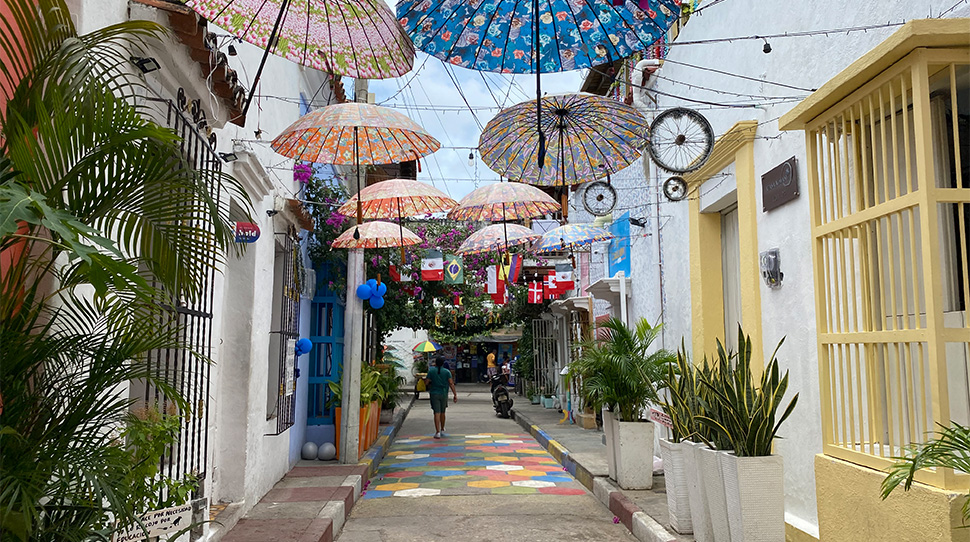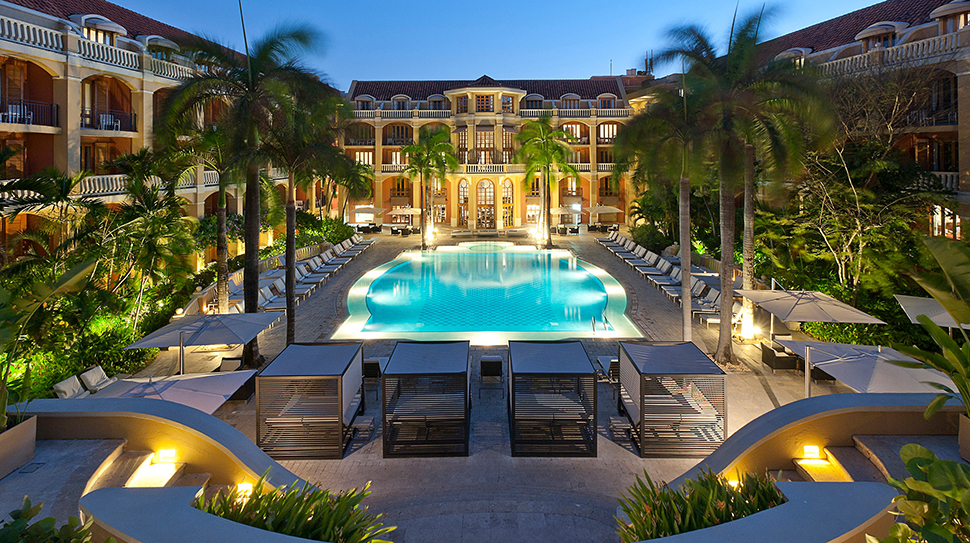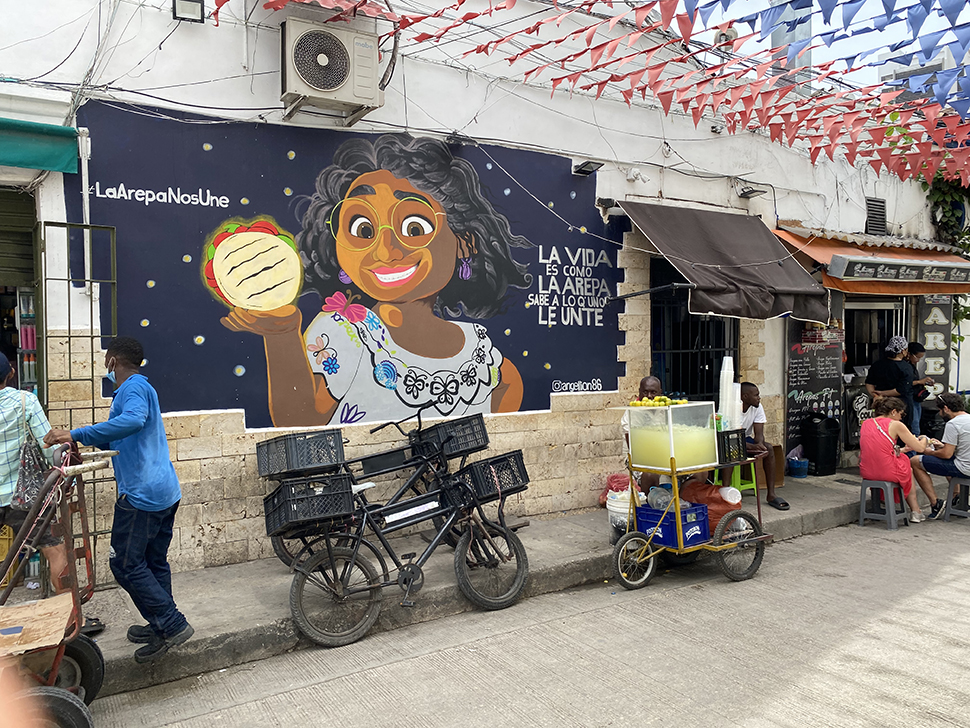

History and art commingle in Cartagena on Colombia’s Caribbean coast. Built to protect the city in the 1600s and 1700s, broad stone walls — the best-preserved fortifications in South America — still stand above the water in the Centro Histórico, the historic downtown core, where heritage buildings line the maze of narrow streets.
Set in this heritage district, in a former convent constructed in 1621, the Forbes Travel Guide Recommended Sofitel Legend Santa Clara Cartagena is ideally located for exploring the arts in the urban center. And you don’t even have to leave the property for a distinctive arts experience.

A Hotel with Art at Its Heart
The Sofitel’s grand, 1,582-square-foot Botero Presidential Suite honors the Colombian artist Fernando Botero, known for the exaggerated, rotund figures of the people he paints. Designed by his daughter Lina Botero, the suite features an original Botero painting. Another Sofitel suite, a two-level unit named for the late Enrique Grau, exhibits work by this painter, who grew up in Cartagena.
The more contemporary Amaral Suite, with a whirlpool tub on a private roof deck overlooking the Caribbean, displays original pieces by husband-and-wife artists Jim Amaral and Olga de Amaral. More than 40 museums have collected the textile works of the Bogota-born Olga, including the Museum of Modern Art in New York and the Art Institute of Chicago. Jim, who was born in the U.S. but has been based in Colombia since the 1950s, is highly regarded for his bronze pieces.

The late Colombian sculptor and painter Ana Mercedes Hoyos inspired the contemporary Suite Legend, which boasts a water view and one of the artist’s original works.
The Sofitel Santa Clara is known for its connection to the literary arts as well. Legendary Colombia writer Gabriel García Márquez came to the building in 1949 to investigate a story of a crypt found in the basement of the former convent. The Cartagena hotel’s story eventually gave rise to his 1994 novel Of Love and Other Demons.
Museums in the Centro Histórico
When you’re ready to venture out, stroll through the old city to Museo de Arte Moderno de Cartagena. Set on Plaza de San Pedro, this contemporary art museum highlights works by artists from this coastal region.
Cartagena’s gold museum, Museo del Oro Zenú, is another old-city arts destination that’s worth a stop. Reopened earlier in 2023 after a renovation, the gallery shares the history and art of Colombia’s Caribbean region, extending back more than 6,000 years.
Ready for a break? Stop for coffee and a pandebono, a delicate puffy cheese bun that’s the specialty at La Esquina de Pandebono, a bakery-café in the Centro Histórico.

Street Art in Getsemaní
Cartagena’s street art hub, the revitalized Getsemaní district, sits adjacent to the Centro Histórico. Local artists, many from Colombia’s diverse communities, have painted vibrant murals on the neighborhood’s stucco buildings and walls, illustrating everything from local customs to tropical fruits and snacks. In fact, one wall painting announces that “La vida es como la arepa” — life is like Colombia’s signature corn pancake.
Begin your wanderings in the Plaza de la Trinidad, the always-bustling public square at the center of Getsemaní. Follow nearly any of the lanes that fan out from the plaza, all lined with cafés, restaurants, shops, bars and murals.
Look for paintings like PWR, a girl-power image by muralist Erre, or for depictions of Cartagena’s palenqueras, the Afro-Caribbean fruit sellers who wear vividly colored, ruffled dresses and carry their tropical wares on their heads. Graffiti artist Yurika MDC painted Maria Mulata, a bright mural illustrating a type of grackle, considered Cartagena’s official bird.

If you prefer a guide for your street art explorations, book a two-hour art walk with Cartagena Connections, where you’ll learn more about the neighborhood’s history and its muralists’ stories.
In case you need a refreshment as you wander, numerous street vendors and cafés throughout Getsemaní sell fresh-squeezed juices, including mango, guanábana (soursop) and níspero (loquat). Coffee, too, is available everywhere, but we recommend Libertario Coffee Roasters for a proper pour-over or a refreshing cold brew. Any of these beverages provide a welcome respite from the often-humid weather in this historic, art-filled city.
